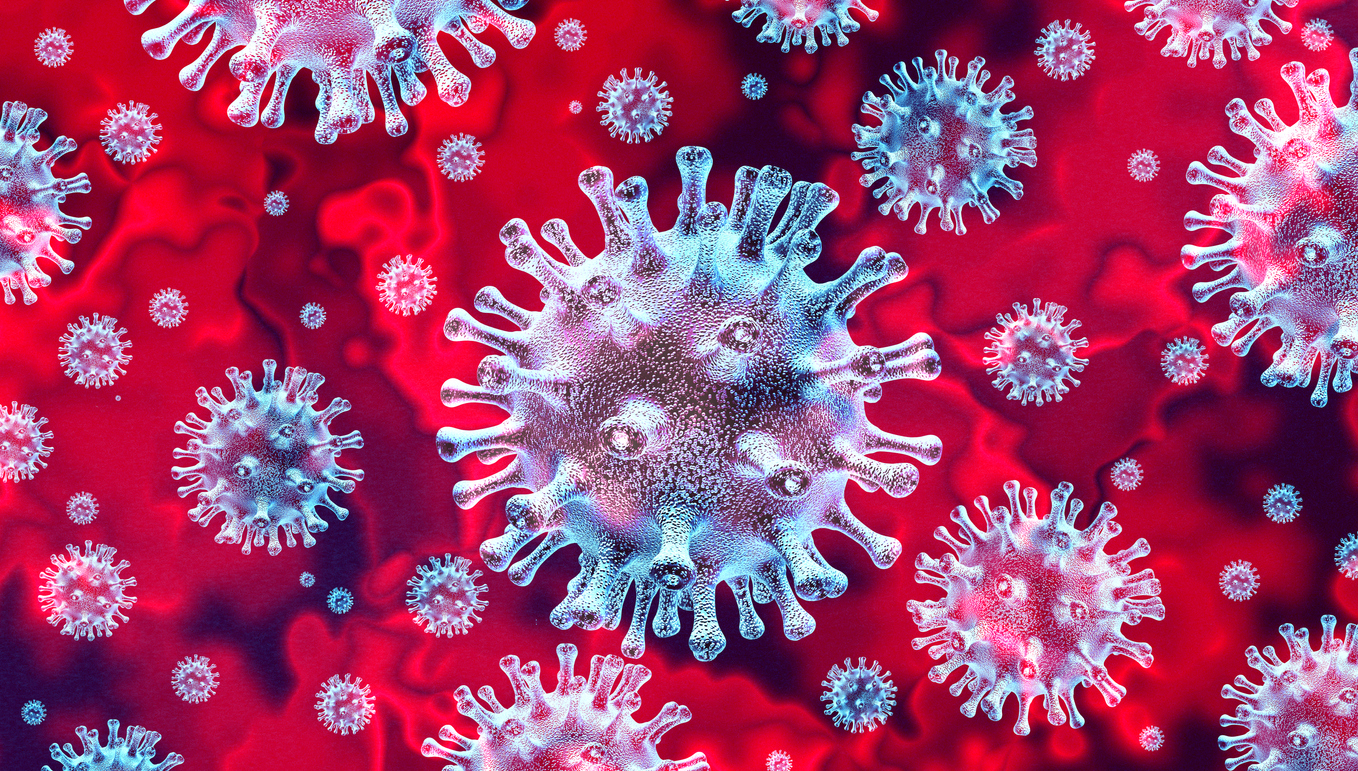An article has been published in the journal Nature which looks at the evidence for the link between the endocrine systems (hormones and the glands that make them) and metabolic systems (processes that occur within the body to convert food into energy and for growth) with coronavirus infection and the novel coronavirus, COVID-19. There is growing evidence that there is an important metabolic and endocrine link to the coronavirus infection [1].
Type 2 diabetes and hypertension (high blood pressure) are the most common underlying health conditions in patients with SARS. [2] There is also evidence that people with type 2 diabetes and the metabolic syndrome (a combination of diabetes, high blood pressure (hypertension) and obesity) may have a higher risk of being seriously ill if they develop COVID-19. There are also specific features of coronavirus infections which could increase this risk.
One type of coronavirus infection, Severe Acute Respiratory Syndrome (SARS) was found to cause more serious disease in those patients who had hyperglycaemia (increased blood glucose levels) and type 2 diabetes. This could be because these patients tend to have metabolic inflammation, which is inflammation that affects the metabolic tissues, such as the liver and the pancreas. This makes these patients more susceptible to enhanced release of cytokines (molecules that circulate in the blood and signal for the body’s immune cells to fight the infection). During an infection the immune system increases the release of cytokines. A cytokine storm (an excessive release of cytokines) occurring in COVID-19 patients can damage tissues and organs and can even cause multi organ failure [3].
Inflammation of the metabolic tissues also affects the immune system, which means it finds it harder to fight infection and slows recovery. A study in animals has shown that type 2 diabetes results in breakdown of control of the immune system and enhances disease severity following infection with a type of coronavirus called Middle East Respiratory Syndrome (MERS) [4]. Although these findings have not been replicated in humans this data may support the theory that developing a coronavirus infection with type 2 diabetes causes more serious symptoms.
What are the specific mechanisms in the endocrine system linked to coronavirus infection?
The endocrine system refers to a number of different glands which secrete hormones into the blood and around the body. The Covid-19 virus uses a protein on its surface, which binds to a type of receptor called angiotensin-converting enzyme 2 (ACE2) to enter cells in the body of the infected person. [5] ACE2s purpose in the lungs is to break down a hormone called angiotensin II into another hormone angiotensin 1-7. When ACE2 is blocked and angiotensin II builds up this can cause problems such as an increase in blood pressure and hypoakalemia (low potassium levels in the blood) and increases risk of respiratory distress syndrome (the lungs not being able to provide the body with enough oxygen).
Angiotensin 1-7 leads to anti-inflammatory and anti-fibrotic (reduces scar tissue build up) responses, both of which are required for the recovery of COVID-19 [6].
What is the metabolic link to coronavirus infection?
There is an association between serious complications from the coronavirus and hypertension (high blood pressure), and also to type 2 diabetes. In the pancreas, evidence shows that the SARS coronavirus binds to the ACE2 receptor, which reduces insulin release (7). One study found that patients with the SARS infection with no history of type 2 diabetes became temporarily hyperglycaemic during hospitalisation for the infection. As the human endocrine pancreas expresses ACE2 the coronavirus could enter the cells, leading to acute hyperglycaemia (high blood sugar levels) and temporary type 2 diabetes.
Type 2 diabetes also induces expression of the angiotensin hormone converting molecules (such as ACE2) in other tissues such as the lung, liver and heart, this may help explain why type 2 diabetes could cause higher risk of developing multi-organ failure in coronavirus infections such as SARS [8].
How could this effect treatment for patients with COVID-19?
The data suggests that metabolic control of type 2 diabetes and associated metabolic parameters in patients with COVID-19 may be important. This could help reduce the risk of complications in patients with type 2 diabetes and a severe infectious disease [1].
The article concludes that good metabolic health is more important than ever for us living through the COVID-19 pandemic
References
- Bornstein,S.R., Dalan, R., Hopkins,D., Mingrone, G. & Boehm,B.O.(2020) Endocrine and metabolic link to coronavirus infection. Nature Reviews Endocrinology. [Online] Available at: https://doi.org/10.1038/s41574-020-0353-9 [Accessed 07 May,2020]
- Yang, J. K. et al.(2006) Plasma glucose levels and diabetes are independent predictors for mortality and morbidity in patients with SARS. Diabet. Med. 23, 623–628 [Online] Available at: https://doi.org/10.1111/j.1464-5491.2006.01861.x Accessed 07 May,2020]
- Mehta, D. et al. (2020). Across Speciality Collaboration, UK. COVID-19: consider cytokine storm syndromes and immunosuppression. Lancet. [Online] Available at: https://doi.org/10.1016/S0140-6736(20)30628-0 [Accessed 07 May,2020]
- Kulcsar, K. A., Coleman, C. M., Beck, S. E. & Frieman, M. B. (2019). Comorbid diabetes results in immune dysregulation and enhanced disease severity following MERS-CoV infection. JCI Insight. 4, 131774. [Online] Available at: 10.1172/jci.insight.131774 [Accessed 07 May,2020]
- Hoffmann, M. et al. (2020). SARS-CoV-2 Cell entry depends on ACE2 and TMPRSS2 and is blocked by a clinically proven protease inhibitor. Cell. [Online] Available at: https://doi.org/10.1016/j.cell.2020.02.052 [Accessed 07 May,2020]
- Simões e Silva, A. C., Silveira, K. D., Ferreira, A. J. & Teixeira, M. M. (2013). ACE2, angiotensin-(1–7) and Mas receptor axis in inflammation and fibrosis. Br. J. Pharmacol. 169, 477–492 [Online] Available at: https://doi.org/10.1111/bph.12159 [Accessed 07 May,2020]
- Roca-Ho, H., Riera, M., Palau, V., Pascual, J. & Soler, M. J. (2017). Characterization of ACE and ACE2 expression within different organs of the NOD mouse. Int. J. Mol. Sci. 18, E563 [Online] Available at: https://doi.org/10.3390/ijms18030563 [Accessed 07 May,2020]




